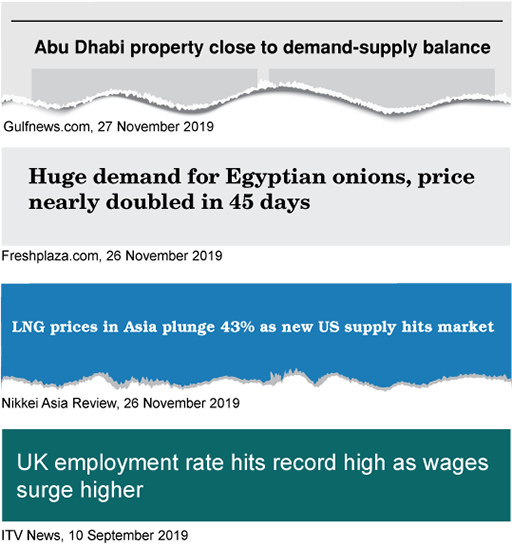3.1 The functioning of markets
The headlines in Figure 6 are commonplace in the world today. These days the existence of the forces of demand and supply is taken for granted. It is accepted that markets typically determine the prices paid for everything from fruit and veg to petrol and property and even the pay for labour. The dominant ideology today is that this price mechanism is the most efficient way to allocate resources, provided that markets trade freely. The underlying premise for this claim is that price encapsulates all the relevant wishes and intentions of buyers and sellers, so a market is essentially an information network.
Suppliers of goods and services are assumed to be ‘profit-maximisers’. In other words, they are motivated to sell as much as they can as long as that increases their profits. Therefore, they will carry on selling more up to the point at which the revenue they get from selling one more unit – called marginal revenue– equals the additional cost of producing that unit – called marginal cost.
Buyers are assumed to be ‘utility-maximisers’ – in other words they will carry on buying more for as long as their utility (pleasure of satisfaction) from doing so is rising. So an individual or household will want to carry on consuming up to the point at which the pleasure they get from consuming the last unit – called marginal utility just equals the cost to them of buying that unit.

